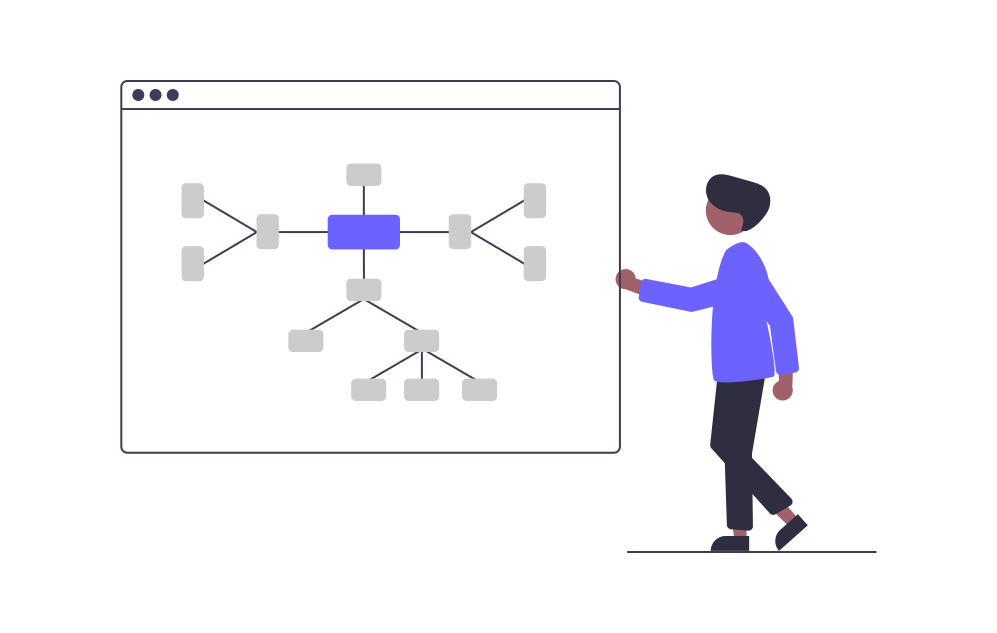In today’s dynamic business landscape, tailored ESG reporting is essential for meeting the diverse needs of organizational structures. As companies grow and operate across different functions, regions, and hierarchical levels, the complexity of gathering and reporting ESG data increases significantly. A one-size-fits-all approach to ESG reporting falls short in addressing various organizational models’ unique challenges and requirements. Tailored ESG reporting ensures that relevant data is accurately captured and effectively communicated, fostering transparency, compliance, and strategic alignment. By customizing ESG reporting to fit the specific structure of an organization, businesses can better meet regulatory demands, enhance stakeholder engagement, and drive meaningful sustainability outcomes.
Exploring Different Organizational Structures and ESG Data Reporting
Organizational structures define how companies are organized and operate, impacting everything from communication to decision-making and data collection. Around the world, several common organizational structures are prevalent, each with unique characteristics and implications for collecting and reporting Environmental, Social, and Governance (ESG) data.
Common Organizational Structures
- Functional Structure:
- Overview: In a functional structure, the organization is divided into departments based on specialized functions such as marketing, finance, human resources, and production. Each department operates independently and is managed by a functional leader.
- ESG Data Collection and Reporting: ESG data collection in functional structures often occurs within each department. For instance, environmental data might be gathered by the operations department, social data by HR, and governance data by legal or compliance teams. Reporting is typically centralized, with each department submitting its data to a central unit responsible for compiling the overall ESG report.
- Geographical Structure:
- Overview: Companies with a geographical structure organize their operations based on location. This is common in multinational corporations that operate in multiple regions or countries, each with its regional headquarters.
- ESG Data Collection and Reporting: In geographical structures, ESG data collection is decentralized and occurs at the regional or local level. Each regional office collects and reports its data which is then consolidated at the corporate level. This approach allows for region-specific ESG considerations, such as local environmental regulations and social issues.
- Hierarchical Structure:
- Overview: A hierarchical structure is a traditional form of organization with a clear chain of command and multiple levels of management. Decision-making authority flows from the top down through various layers of the hierarchy.
- ESG Data Collection and Reporting: In hierarchical structures, ESG data collection is often top-down. Senior management sets ESG objectives and guidelines, which are then implemented and reported by lower-level managers and their teams. Data is aggregated as it moves up the hierarchy, ensuring alignment with overall corporate goals.
- Project-Based Structure:
- Overview: In a project-based structure, the organization is arranged around projects or temporary teams formed to accomplish specific objectives. Employees from various departments collaborate on projects, and once a project is completed, team members may move on to new projects. This structure is common in industries such as construction, consulting, and software development, where the focus is on delivering specific outcomes within a set timeframe.
- ESG Data Collection and Reporting: ESG data collection in project-based structures is typically decentralized and project-specific. Each project team is responsible for gathering relevant ESG data related to their project’s activities and impacts. This may include tracking environmental performance, social impacts, and governance practices within the project scope. Reporting is often project-centric, with data being compiled and analyzed for each project before being aggregated at the organizational level.
- Matrix Structure:
- Overview: The matrix structure combines aspects of both functional and project-based structures. Employees report to both functional managers and project managers, facilitating flexibility and collaboration across departments.
- ESG Data Collection and Reporting: In matrix structures, ESG data collection can be complex due to dual reporting lines. Data may be gathered by functional departments and project teams, requiring robust coordination to ensure consistency and avoid duplication. Reporting typically involves collaboration between functional and project managers to compile comprehensive ESG reports.
Importance of Adaptable ESG Reporting Frameworks
Given the diversity in organizational structures, it is crucial for ESG reporting frameworks to be adaptable. A one-size-fits-all approach is ineffective, as different structures present unique challenges and requirements for data collection and reporting. An adaptable ESG reporting framework ensures:
- Relevance: ESG reports must reflect the specific needs and priorities of different organizational units, whether they are functional departments, geographical regions, or project teams.
- Consistency: Despite variations in data collection processes, the framework ensures that ESG data is consistently reported across the organization, facilitating accurate and reliable analysis.
- Compliance: Adaptable frameworks help organizations meet various regulatory requirements and standards, which may differ based on location or industry.
- Transparency: Tailored ESG reporting enhances communication with stakeholders by providing clear, relevant, and comprehensive information about the organization’s sustainability efforts.
The Hydrus Solution
Hydrus.ai offers a sophisticated solution to address the complexities of ESG reporting across diverse organizational structures. Here’s how Hydrus.ai enhances ESG reporting:
- Customizable Reporting Tools:
- Tailored Reports: Hydrus.ai’s customizable reporting tools allow organizations to generate ESG reports that reflect specific organizational needs and stakeholder demands. Whether dealing with a functional, geographical, hierarchical, project-based, or matrix structure, Hydrus.ai can adapt to ensure relevant and comprehensive reporting.
- Stakeholder Communication: The platform enhances communication and transparency by providing clear, tailored reports that meet the expectations of various stakeholders, including investors, customers, and regulatory bodies.
- Integration and Data Aggregation:
- Seamless Integration: Hydrus.ai integrates with existing data sources within the organization, whether they come from different departments, regions, or project teams. This integration ensures that all relevant ESG data is captured and consolidated.
- Real-Time Dashboard: The platform offers a real-time dashboard that provides a comprehensive overview of ESG performance across the organization, enabling timely and informed decision-making.
- Advanced Analytics and Insights:
- Data-Driven Insights: Hydrus.ai uses advanced analytics to transform raw ESG data into actionable insights. This capability allows organizations to identify trends, assess risks, and make data-driven strategic decisions.
- Scenario Modeling: The platform’s scenario modeling tools enable organizations to explore different ESG scenarios and their potential impact, helping to plan and implement effective sustainability strategies.
Conclusion
Understanding and adapting to diverse organizational structures is crucial for effective ESG data collection and reporting. Whether operating within a functional or project-based structure, companies face unique challenges that require tailored reporting frameworks. Hydrus.ai’s customizable reporting tools and advanced analytics capabilities provide a comprehensive solution to these challenges, ensuring that organizations can seamlessly align their ESG initiatives with their corporate structure. By leveraging advanced tools such as Hydrus.ai, businesses can enhance communication, transparency, and strategic decision-making, ultimately driving their sustainability goals and achieving long-term success.



